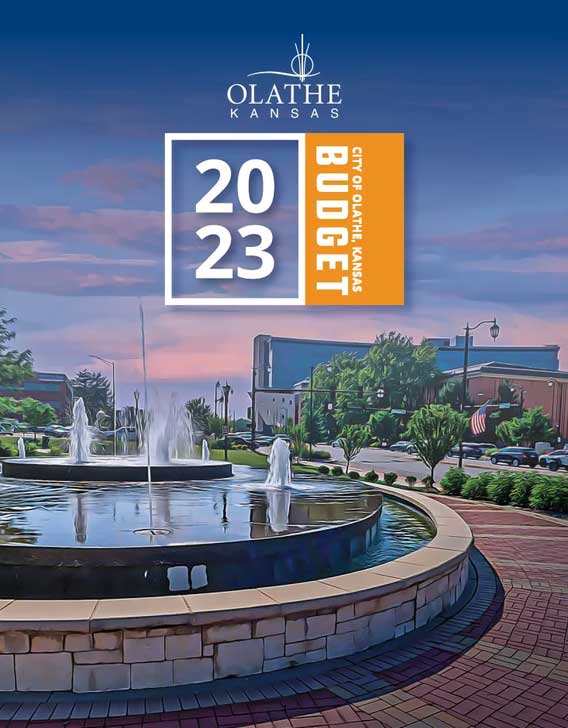The City of Olathe faces several infrastructure challenges, including maintaining and upgrading its aging water and sewer systems, ensuring adequate transportation infrastructure to support a growing population, and addressing stormwater management issues. The city is also focusing on developing and enhancing its parks and recreation facilities and improving access to broadband internet services. Additionally, Olathe is working to address affordable housing needs and the impact of climate change on its infrastructure.

Sample Highlights from the Capital Improvement Plan
Project ID
Project Title
Project Start Year
Project Description
Project Spend Total
Page Ref
Project Satus
584779
Briarwood Stormwater Improvements
2024
“This project will address street and structure flooding in the Briarwood subdivision with is located northwest of 139th Street and Brougham
Drive. The Preliminary Engineering Study (PES) identified six homes that have flood water against the structures during the 10 year (10%
chance) flood event, along with street flooding on Edinburgh Street and Brougham Drive. The preferred alternative includes replacing and
upsizing the exisitng storm sewer alignment from the west side of Tomahawk Elementary School to the outlet into Indian Creek.”
3450000
166
Not Started
584787
Lake and Dam Restoration
2026
“Lake improvements may include dredging, spillway rehabilitation, dam restoration, and creation of sediment forebays/wetlands. Some spillway
improvements may provide detention to protect downstream properties.”
1000000
170
Not Started
584797
Streambank Stabilization Projects
2025
“The Indian Creek Geomorphology Study identified 38 locations for stabilization projects with an estimated cost of $3,500,00. Mill Creek and
Cedar Creeks will be studied during the county’s watershed planning process. This project will leverage SMAC funding to implement projects
identified in the streambank stabilization studies.”
1500000
171
Not Started
584834
BSNF West Track Separation Preliminary Engineering
2024
“This project will provide conceptual engineering to examine raising the western BNSF railroad tracks (Emporia Subdivision) between Woodland
Road and Dennis Avenue to provide grade separated crossings.”
500000
184
Not Started
584870
College Blvd, Cedar Niles to Clare, Improvements
2025
“This project will improve College Boulevard from Cedar Niles Boulevard to Clare Road to a 4-lane divided arterial. Improvements will include
pavement construction, curb and gutter, medians, street lights, sidewalk and sidepath, bike lanes and storm sewers.”
16675000
187
Not Started
Explore all options available to you!
Citylitics offers access to over 30,000 unique locations across North America through our Capital Projects Dashboard (CPD).
Capital Projects Dashboard (CPD) provides a comprehensive market view of all planned infrastructure spend in one single view with powerful filters such as: population, project value, fiscal year, project status, project description, geography, and more. The dashboard will help identify opportunity hot spots, create data-driven forecasts you can be confident in with bottom-up data for the next 5 years of planned infrastructure spend, and uncover true market needs.
How to Read a Capital Improvement Plan (CIP) for Business Development?
When a city, municipality or state issues a Capital Improvement Plan (CIP), it can be overwhelming and daunting, but there are a few key things you need to investigate. Let’s start with the definition of CIP – A Capital Improvement Plan (CIP) contains all the individual capital projects, equipment purchases, and major studies for a local government; in conjunction with construction and completion schedules, and in consort with financing plans. The plan provides a working blueprint for sustaining and improving the community’s infrastructures. It coordinates strategic planning, financial capacity, and physical development. A CIP stands at the epicenter of a government’s Planning, Public Works, and Finance departments. When a CIP is issued, it typically includes the following information:
- A listing of the capital projects or equipment to be purchased
- The projects ranked in order of preference
- The plan for financing the projects
- A timetable for the construction or completion of the project
- Justification for the project
- Explanation of expenses for the project
Now, for business development, while the capital plan is interesting, the capital program is for capital expenditures that extends five to ten years beyond the capital budget. Knowing the difference is important so you can influence upcoming program versus just responding to an RFP. If reading the CIP makes your head explode, or you want to save time, Request a Demo of Citylitics CIP dashboard with over 20,000 CIPs from USA and Canada. Citylitics has 20,000 plus available CIPs, how can we help you? What states, cities or counties are you looking to improvement your business development, we can assist you in influencing an upcoming RFP versus simply responding to an RFP. Citylitics Capital Projects Dataset is a comprehensive resource for businesses and organizations looking to track and analyze planned infrastructure spend in their area. The dataset offers a range of features and benefits, including:
- Comprehensive Market View: The dataset provides a single view of all planned infrastructure spend, with powerful filters such as population, project value, fiscal year, project status, project description, geography, and more. This allows businesses to gain a comprehensive understanding of the market and identify new opportunities.
- Identify Opportunity Hot Spots: The dataset offers map views and filters that allow users to identify opportunity hot spots where they need to allocate resources. This helps businesses to understand where they should focus their efforts to achieve the best results.
- Create Data-Driven Forecasts: The dataset provides bottom-up data for the next 5 years of planned infrastructure spend, allowing businesses to create data-driven forecasts they can be confident in.
- Uncover True Market Needs: The dataset allows businesses to develop long-term business plans, R&D, and growth initiatives based on true, bottom-up market needs instead of opinions and anecdotes. This helps businesses to make more informed decisions and achieve better results.
With Citylitics Capital Projects Dataset, businesses can gain a deeper understanding of planned infrastructure spend in their area, which can help them to identify new opportunities and make more informed decisions.
